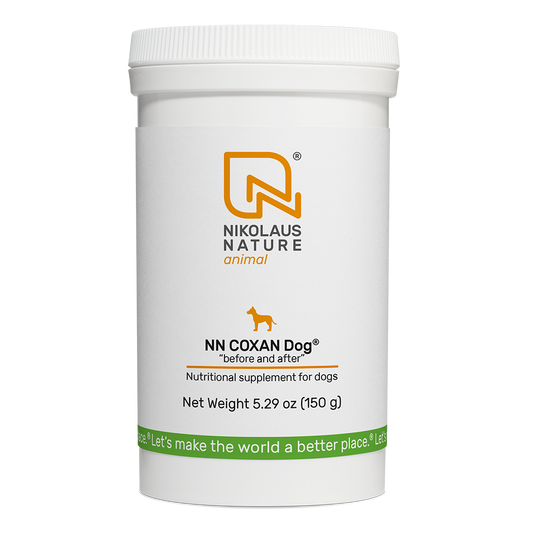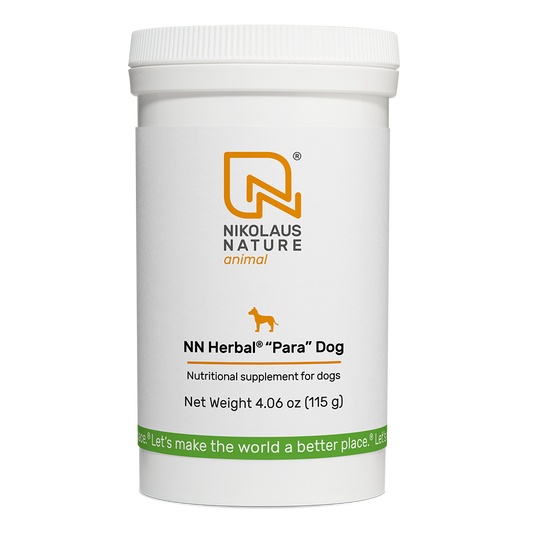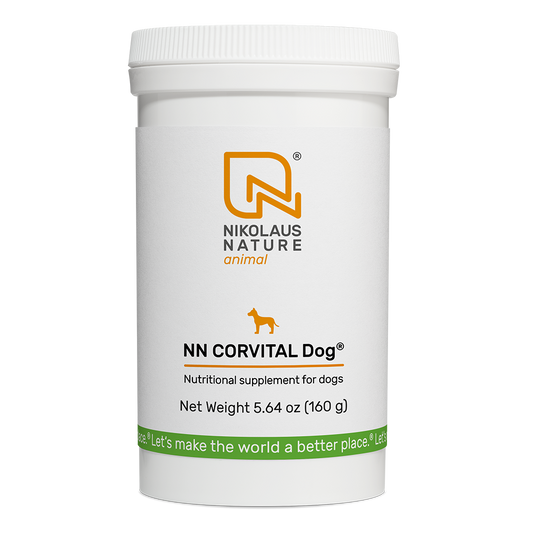Top Signs of Arthritis in Dogs
Did you know that approximately 80% of dogs over 8 years old are affected by osteoarthritis?
Arthritis is the most common cause of chronic pain in our canine companions. This statistic highlights a significant health concern many pet owners may be unaware of. As our dogs age, their joints are susceptible to wear and tear, affecting their quality of life.
Keep reading to know the top signs of arthritis in dogs, learn to recognize the symptoms early, and take proactive steps to keep your pet happy and active.

What Are the Signs and Symptoms of Arthritis in Dogs?
Arthritis in dogs – particularly osteoarthritis – is a progressive condition that can cause discomfort and loss of mobility in dogs. Identifying the signs early can make a significant difference in managing this chronic disease.
Below, we explore the various indicators of arthritis, from early signs to specific symptoms based on location.
Early Signs of Canine Arthritis: Recognizing Initial Indicators
In the early stages, arthritis symptoms can be subtle and easily mistaken for normal aging. However, there are key behaviors to watch for that may indicate your dog is experiencing joint discomfort:
- Lethargy or reluctance to play – Dogs with arthritis may show less enthusiasm for physical activities, like running or jumping, and may prefer to rest more often.
- Difficulty with mobility – Struggling to get up from a lying or sitting position, hesitating to climb stairs, or walking with noticeable stiffness are all early indicators.
- Behavioral changes – Some dogs may become irritable or withdrawn due to the discomfort caused by arthritis. You might also notice excessive licking of the joints as a sign of pain.
Common Symptoms by Location:
Arthritis symptoms can vary depending on which joints are affected. Different areas of the body may show different signs.
Signs of Joint Pain in Dogs
Joint pain is one of the most telling signs of arthritis. Dogs may:
- Limp or favor one leg over the other
- Move more slowly than usual, particularly after periods of rest
- Exhibit stiffness, especially in the morning or after prolonged inactivity
Osteoarthritis in Dogs Symptoms
Osteoarthritis affects the cartilage in the joints. Over time, the cartilage wears down, leading to:
- A grinding or cracking sound in the joints (crepitus)
- Muscle wasting around the affected joints due to lack of use
- Visible swelling or warmth around the joints
- A noticeable reduction in your dog’s range of motion
Hip Pain in Dogs
Hip dysplasia – a common condition in large-breed dogs – can lead to arthritis in the hip joints. Symptoms of hip pain include:
- Bunny-hopping gait (hind legs move together rather than separately)
- Reluctance to rise from a lying position
- Difficulty sitting or lying down comfortably
- Limping or dragging one or both hind legs
Remember: Older dogs may also experience weight gain due to reduced activity and it can worsen arthritis symptoms by placing additional strain on their joints.
What Causes Arthritis in Dogs?
A variety of factors can cause arthritis. However, there are some specific causes that can make arthritis more likely in dogs.
1. Age
As dogs age, the cartilage that cushions their joints naturally wears down. This process is similar to what happens in humans, where the cartilage gets thinner and less effective at protecting the bones from rubbing against each other. Over time, this friction causes inflammation and pain in the joints, leading to arthritis.
This is why arthritis is more common in older dogs and why it’s often associated with “getting old” — but it doesn’t have to be. There are ways to manage and slow down the progression.
2. Breed and Genetics
Some dog breeds are genetically predisposed to arthritis, typically large breeds like Labradors, German Shepherds and Golden Retrievers. These breeds often develop hip or elbow dysplasia – a malformation of the joints that can lead to arthritis over time.
Breeds like Dachshunds and Basset Hounds are also more prone to arthritis because of their unique body shapes and the strain they can place on their joints.
Even within breeds, individual dogs may have a genetic predisposition to joint issues, so if arthritis runs in your dog's family, they might be at a higher risk.
3. Joint Injuries
Dogs that have suffered joint injuries, such as ligament tears (like a torn ACL), fractures, or dislocations, are at a higher risk of developing arthritis later in life.
When a joint is injured, even if it heals, the damage to the cartilage can lead to early-onset arthritis. This is why it’s important to ensure any joint injuries are treated thoroughly and managed properly, as untreated injuries can accelerate the breakdown of cartilage.
4. Obesity
Obesity is a big factor in the development of arthritis in dogs. When a dog is overweight, their joints have to carry extra weight. It also puts more stress on the cartilage and accelerates its breakdown. This is especially true for dogs already predisposed to arthritis or joint issues due to their breed or genetics.
Keeping your dog at a healthy weight can help reduce the risk of arthritis and ease the symptoms if they already have it.
5. Infections and Autoimmune Diseases
In some cases, bacterial infections, such as Lyme disease, can cause joint inflammation that mimics arthritis. Additionally, autoimmune diseases like lupus or immuned mediated polyarthritis can cause the immune system to attack the joints.
These types of arthritis are less common but can be serious if left untreated.
6. Developmental Issues
Some dogs are born with joint abnormalities or developmental issues that make them more susceptible to arthritis. Conditions like hip dysplasia, elbow dysplasia, or luxating patellas (kneecaps that slip out of place) can cause the joints to wear down faster than normal and even affect relatively young dogs.
7. Poor Nutrition
Proper nutrition plays a big role in joint health. Dogs that don’t get the right balance of nutrients, especially during their growth phases, are at a higher risk of developing joint problems later in life. Poor nutrition makes bones and cartilage weak.
Diagnosing Arthritis in Dogs: What to Expect
If you suspect your dog may have arthritis, the first step is to visit your veterinarian for a proper diagnosis. Diagnosing arthritis early can make a huge difference in managing the condition. Here’s what a diagnostic process should be.
Veterinary Examination
When you bring your dog in for an examination, your vet will begin with a thorough physical exam. This is where they’ll observe how your dog moves, paying close attention to any signs of pain, stiffness, or limping.
They’ll also likely ask you about your dog’s behavior at home—things like whether your dog has been slow to get up, hesitant to jump or climb stairs, or less active than usual.
During the exam, the vet will feel your dog’s joints to check for swelling, warmth, or signs of discomfort. They’ll gently manipulate the joints to assess a range of motion and listen for any grinding or clicking sounds – which can indicate joint damage.
This hands-on assessment gives the vet a good idea of whether arthritis is likely, but it’s only the first step.
Diagnostic Tools to be Used
Once your vet suspects arthritis, they may recommend additional diagnostic tests to confirm the condition and determine how advanced it is. Here are some of the most common tests they perform:
1. X-rays (Radiographs)
X-rays are often the first imaging test used to diagnose arthritis in dogs. They can show changes in the bones and joints, such as narrowing of the joint spaces, bone spurs, or cartilage loss. X-rays are beneficial for identifying osteoarthritis.
However, keep in mind that early-stage arthritis may not always show up on X-rays, as the damage to cartilage won’t be visible until it’s more advanced. That’s why vets often rely on a combination of the physical exam and other tests.
2. Joint Fluid Analysis
In some cases, your vet may want to collect a fluid sample from the affected joint (this process is called arthrocentesis). By analyzing the fluid, they can look for signs of inflammation or infection, which can help rule out other conditions that may mimic arthritis, such as bacterial or autoimmune diseases.
While joint fluid analysis isn’t always necessary for a straightforward arthritis diagnosis, it can be useful when the vet needs more detailed information about what’s happening inside the joint.
3. Blood Tests
Though blood tests can’t diagnose arthritis directly, they’re often used to rule out other potential causes of joint pain, such as infections.
If your dog shows symptoms that suggest a systemic issue (like Lyme disease), your vet may run blood tests to check for markers of infection or immune system activity.
4. CT Scans or MRI
In more complex cases, or if the vet suspects something unusual is contributing to your dog’s joint issues, advanced imaging tools like a CT scan or MRI may be used.
These tests provide a much more detailed view of the joints, including the soft tissues like cartilage, tendons, and ligaments.
CT scans and MRIs are particularly useful when the arthritis is in hard-to-examine areas, such as the spine, or when other diagnostic tools haven’t given clear answers.
5. Ultrasound
While not as commonly used as X-rays for diagnosing arthritis, ultrasound can be helpful in certain situations. It allows the vet to see inside the joint and assess the soft tissues, including the synovial membrane (the lining of the joint) and surrounding muscles or ligaments.
This can be a valuable tool for evaluating the extent of joint damage in dogs with advanced arthritis or when other conditions are suspected.
Force Plate Gait Analysis
Force plate gait analysis is a specialized test that measures the forces exerted by your dog's paws as they walk. It provides objective data on how their joints are functioning under load.
The diagnostic process for arthritis can feel a bit overwhelming, but it’s all part of making sure your dog gets the proper treatment.
With early diagnosis, you can take steps to manage your dog’s arthritis, reduce pain, and keep them comfortable for as long as possible. Your vet will guide you through the process and recommend the best course of action for your dog's specific needs.

Treatment Options for Dogs with Arthritis
When your dog is diagnosed with arthritis, the good news is that plenty of treatment options are available to help manage their pain and improve their quality of life. While arthritis can’t be cured, a combination of medical treatments, lifestyle changes, and alternative therapies can make a world of difference.
Here are some of the most effective ways to help your dog feel better.
Medical Management
There are several medications your vet might recommend, and new treatments are being developed to make life easier for dogs with arthritis.
1. Non-steroidal anti-inflammatory Drugs (NSAIDs)
NSAIDs are commonly prescribed drugs. These medications work by blocking the enzymes, specifically COX-1 and COX-2, that contribute to inflammation. However, inhibiting these enzymes can sometimes cause side effects like stomach upset or kidney issues.
Some of the most frequently used NSAIDs for dogs include:
- Carprofen (Rimadyl)
- Meloxicam (Metacam)
- Deracoxib (Deramaxx)
More recently, grapiprant (Galliprant) has become available to treat osteoarthritis. It is a newer NSAID that works differently. Instead of blocking COX enzymes, it targets a specific receptor called the EP4 receptor. This receptor is involved in the inflammatory process and pain signaling.
By blocking the EP4 receptor, grapiprant helps reduce pain and inflammation without affecting the COX enzymes. This may make it a good option for dogs who don't tolerate traditional NSAIDs well.
While generally safe, it's important to remember that all medications can have potential side effects. Your vet will consider your dog's overall health and any other medications they're taking to determine if grapiprant is the right choice.
2. Gabapentin and Amantadine
For dogs experiencing severe or chronic pain, your vet may suggest adding Gabapentin or Amantadine to their treatment plan. These drugs work in different ways than NSAIDs.
Gabapentin helps manage nerve-related pain, while Amantadine can enhance the effects of other pain medications by altering how the brain processes pain signals. This combination can provide more comprehensive pain relief for dogs with advanced arthritis.
3. Corticosteroids
In cases where inflammation is severe and does not respond to NSAIDs, vets sometimes prescribe corticosteroids like Prednisone.
These medications are powerful anti-inflammatories, but they’re typically used for short-term treatment because long-term use can have significant side effects, such as immune suppression and muscle loss.
4. Pentosan Polysulfate Sodium (PPS)
This relatively newer drug has gained attention for its ability to protect cartilage and improve joint function in arthritic dogs. Pentosan Polysulfate Sodium (PPS) is often administered through a series of injections and is thought to stimulate joint repair and reduce inflammation. Some studies have shown promising results, especially in managing osteoarthritis.
5. Monoclonal Antibody Therapy (Librela)
One of the most exciting recent developments in arthritis treatment for dogs is Monoclonal Antibody Therapy, specifically a drug called Librela. This is a monthly injection that targets and blocks the pain signals related to arthritis without the side effects associated with NSAIDs. Because it’s so targeted, it’s considered safe for long-term use and is a great option for dogs who don’t tolerate traditional medications well.
Lifestyle Adjustments
Managing arthritis doesn’t just stop at medications—changing your dog’s lifestyle can improve their pain.
1. Weight Management
Extra weight puts added stress on their joints, worsening the symptoms of arthritis.
2. Exercise Routine
While you might think it’s best to let your dog rest, regular exercise is important for maintaining muscle mass and joint flexibility.
It’s all about finding the right balance—too much activity can worsen their symptoms, but gentle, consistent movement can help reduce stiffness. Short, frequent walks or swimming in a dog-friendly pool can be ideal forms of exercise.
3. Supportive Bedding and Home Modifications
Providing your dog with an orthopedic bed can help reduce pressure on their joints while they sleep. You can also modify the house to help them get around more easily, like adding ramps to get on the couch or into the car, or using non-slip mats on slippery floors.
Alternative Therapies
Several alternative therapies can support your dog’s arthritis management.
1. Physical Therapy
Physical therapy for dogs – called canine rehabilitation – involves exercises and techniques designed to strengthen muscles, improve joint function, and reduce pain.
Therapists might use balance exercises, range-of-motion exercises, or hydrotherapy (swimming or walking on an underwater treadmill) to help your dog build strength without putting too much stress on their joints.
2. Acupuncture
Acupuncture has been used in veterinary medicine for years to help manage pain and promote healing. Tiny needles are inserted into specific points of your dog’s body to stimulate nerve pathways and improve circulation. While it might sound strange, many dog owners report seeing significant improvements in their dog’s mobility and comfort levels after a few sessions.
3. Laser Therapy
Low-level laser therapy (also called cold laser therapy) is another non-invasive treatment option that’s become more popular for managing arthritis. The laser promotes healing and reduces inflammation in the affected joints. It’s painless, and many dogs find the sessions soothing, similar to a warm massage.
4. Supplements
Joint supplements, like omega-3 fatty acids, chondroitin, and glucosamine, are very effective for joints and help reduce inflammation.
These supplements, like NN COXAN, are often recommended alongside other treatments to provide added support to your dog’s joints over time.
5. Stem Cell Therapy
An advanced option for treating arthritis in dogs is stem cell therapy. In this procedure, stem cells are harvested from your dog’s fat tissue and injected into the affected joints to promote healing and repair damaged cartilage.
Though it’s more costly and unavailable everywhere, stem cell therapy has shown promising results in helping dogs with arthritis experience less pain and better mobility.
Conclusion
To wrap things up, managing arthritis in dogs is about recognizing the subtle shifts in behavior and taking the proper steps to support their health and happiness. The best thing you can do is stay attentive to changes in your dog’s mobility, mood, and activity levels as they age.
Each dog’s journey with arthritis is unique, so being proactive and partnering with your vet allows you to build a personalized care plan that truly supports your dog’s quality of life. It’s a path that requires some patience and understanding, but the love and companionship you share make every effort worthwhile.
So, take it step-by-step, stay informed, and prioritize your dog’s comfort—because a happy, pain-free pup is always worth it.
FAQs
What are the first signs of arthritis in dogs?
The earliest signs include stiffness and reluctance to move, especially after rest. You might notice subtle changes, like slower movements, difficulty getting up, or hesitation to climb stairs or jump.
Some dogs may start limping, favoring one limb more than others. Licking or chewing at painful joints can also indicate irritability when touched in certain areas.
What are the behaviors of a dog with arthritis?
Dogs show less interest in physical activities they once enjoyed, like playing or going for walks. They may avoid stairs, become more withdrawn, or show signs of discomfort when handled. Some dogs develop a limp or altered gait, moving more stiffly or cautiously to avoid joint pain.
Can arthritis be prevented?
While arthritis is common in dogs as they age, these steps can help delay its onset. Maintaining a healthy weight is essential, as extra weight accelerates joint degeneration. Regular but controlled exercise supports joint health by building muscle to stabilize the joints.
Some vets recommend joint supplements containing glucosamine and chondroitin early in life, especially for breeds prone to arthritis.
At what age do dogs start having joint pain?
Dogs can start experiencing joint pain at any age, although it is more common in senior dogs. Some dogs may develop joint problems as early as one year old due to genetic predisposition, injuries, or obesity.
However, most dogs begin to show signs of joint pain as they enter their senior years, typically between 5 and 9 years old for most breeds.
Are there any new medicines for dogs with arthritis?
Yes, recent advancements have led to new treatments for arthritis in dogs. Monoclonal antibody injections like Librela provide targeted pain relief with potentially fewer side effects compared to traditional medications. Your vet administers these.
Alongside these advancements, a newer NSAID called grapiprant (Galliprant) offers a different way to manage pain and inflammation, making it a good option for some dogs. Regenerative therapies like stem cell treatments are also on the horizon. Talk to your vet about the best approach for your dog.
Sources:
- Arthritis in dogs - the basics, https://caninearthritis.co.uk/what-is-arthritis/arthritis-in-dogs-the-basics/#
- How dog owners and veterinary surgeons describe identifying canine osteoarthritis, https://pmc.ncbi.nlm.nih.gov/articles/PMC7755036/
- Lyme Disease, https://hospital.vetmed.wsu.edu/2021/11/01/lyme-disease/
- Disorders Involving Immune Complexes (Type III Reactions) in Dogs, https://www.merckvetmanual.com/dog-owners/immune-disorders-of-dogs/disorders-involving-immune-complexes-type-iii-reactions-in-dogs
- Patellar luxation, https://www.vet.cornell.edu/departments-centers-and-institutes/riney-canine-health-center/canine-health-information/patellar-luxation
- Arthrocentesis - Synovial Fluid Sampling, https://www.vin.com/apputil/content/defaultadv1.aspx?pId=19840&id=8249833
- Force plate gait analysis, https://pubmed.ncbi.nlm.nih.gov/18038008/
- Advances in the pharmaceutical treatment options for canine osteoarthritis, https://pmc.ncbi.nlm.nih.gov/articles/PMC9790257/
- What Veterinarians Should Advise Clients About Pain Control and NSAIDs in Dogs, https://www.fda.gov/animal-veterinary/resources-you/what-veterinarians-should-advise-clients-about-pain-control-and-nonsteroidal-anti-inflammatory-drugs
- Grapiprant: A snapshot of the current knowledge, https://pmc.ncbi.nlm.nih.gov/articles/PMC8518515/
- Systemic use of pentosan polysulphate in the treatment of osteoarthritis, https://pubmed.ncbi.nlm.nih.gov/8683953/
- First Monoclonal Antibody for Dogs with Osteoarthritis Pain, https://www.fda.gov/animal-veterinary/cvm-updates/fda-approves-first-monoclonal-antibody-dogs-osteoarthritis-pain#
- Effect of acupuncture on pain and quality of life in canine, https://pmc.ncbi.nlm.nih.gov/articles/PMC5556488/
- Effects of low‐level laser therapy on dogs with naturally occurring osteoarthritis, https://pmc.ncbi.nlm.nih.gov/articles/PMC10029903/
- Stem Cell Therapy for Aging Related Diseases and Joint Diseases in Companion Animals, https://pmc.ncbi.nlm.nih.gov/articles/PMC10417747/







